Duolingo
Updated June 24, 2024
Duolingo was born from the innovative minds of Luis von Ahn and Severin Hacker, who met at Carnegie Mellon University. Von Ahn, previously known for selling reCAPTCHA to Google, teamed up with Hacker to tackle the costly barriers of language education he experienced growing up in Guatemala. Launched publicly in 2012, Duolingo started as a unique blend of language learning and crowdsourced translation. Today, it stands as the world's most popular language learning platform, with over 500 million users worldwide. Its achievements include numerous accolades such as Apple's iPhone App of the Year and the Crunchies' Best Education Startup (Wikipedia) (TechCrunch) (University Programs).
Differentiation: Duolingo sets itself apart through its gamified learning approach, making it distinct from competitors like Rosetta Stone which focus more on traditional marketing and course sales strategies. Duolingo emphasizes continual product enhancement, driven by a mix of full-time staff and volunteer contributors passionate about the mission. This approach ensures a dynamic, user-focused experience, continually evolving to meet the diverse needs of its global user base (Money Inc).
How to Get Started: To begin homeschooling with Duolingo, simply create a free account on their platform. Duolingo is designed to be highly accessible, requiring minimal setup and no upfront costs. The program recommends regular, short sessions (about 5-20 minutes) daily to maximize retention and progress.
How It Works: Duolingo's user-friendly interface and structured lessons allow learners to start at a comfortable skill level and progress at their own pace. Activities include listening exercises, flashcards, and translation tasks, which are gamified with points, levels, and in-app rewards to keep students engaged. The platform's flexibility allows it to be used as a supplementary tool or a core component of a language curriculum, adaptable to either independent study or parent-led sessions (Money Inc).
Educational Content and Languages Offered:
Spanish, French, German, Italian, Chinese, Japanese, and more
Over 30 languages, including lesser-studied options like Welsh and Irish
Special courses on fictional languages for advanced interest (e.g., Klingon, High Valyrian)
What’s Good About It: Users praise Duolingo for its engaging, playful approach that transforms language learning into a fun daily habit. The app's intuitive design, immediate feedback, and personalized learning paths tailored to individual progress are particularly appreciated. The community elements, such as leaderboards and friends' lists, add a layer of social motivation that is often highlighted in user reviews (Wikipedia) (TechCrunch).
What Could Be Improved: While Duolingo offers an extensive range of languages, some users feel the depth of grammar and cultural context could be enhanced. The freemium model, although accessible, can be limiting for those who wish to avoid ads and desire more in-depth features, which requires a paid subscription. Additionally, the reliance on gamification can sometimes overshadow the need for more comprehensive writing and speaking practice (Money Inc).
Overall Educational Value Score: 61
Duolingo received a positive score of 86 and a negative score of 25, resulting in an overall educational value score of 61. The primary positives include its innovative gamified approach, high engagement levels, and user-friendly interface. Negatives focus on the lack of writing practice and personalization, as well as potential distractions due to heavy gamification.
Positive Score Breakdown:
Uniqueness (8/10): Duolingo's gamified, interactive platform stands out in the language learning space, offering a creative approach that includes bite-sized lessons and instant feedback.
Engagement (9/10): The app is highly engaging for children, utilizing game-like elements, rewards, and challenges that keep students motivated and excited about learning new languages (Language Learning At Home) (Findmykids App).
Accuracy (8/10): Duolingo provides accurate language content with a strong emphasis on vocabulary and grammar, though some nuances of language may be less emphasized (Homeschool Curriculum Review).
User-Friendliness (9/10): The platform is intuitive and easy to navigate for both children and parents, with minimal technical issues reported (Homeschool.com).
Pedagogy (7/10): While effective in teaching vocabulary and basic grammar, Duolingo's pedagogical approach lacks depth in writing and speaking practice, particularly for non-Latin alphabet languages (Language Learning At Home) (Findmykids App).
Homeschooling (8/10): Homeschooling parents find Duolingo to be a convenient and enjoyable tool for language learning, especially appreciated for its flexibility and ease of use on the go (Language Learning At Home) (Homeschool.com).
Learning Focus (8/10): Duolingo emphasizes practical, real-world language skills over test preparation, which aligns well with deep, meaningful learning (Homeschool Curriculum Review).
Personalization (6/10): The app offers some level of customization but does not fully cater to individual learning needs or diverse learning styles (Findmykids App).
Special Needs (7/10): Duolingo is accessible for many learners, but its lack of customization might not fully support children with specific learning disabilities (Findmykids App).
Value (8/10): Duolingo is free with optional premium features, offering great value for the extensive educational benefits it provides (Homeschool Curriculum Review).
Negative Score Breakdown:
Boredom (2/10): Some users might find the repetitive nature of the lessons less stimulating over time, but overall, the app maintains high engagement levels (Language Learning At Home).
Addictive Components (6/10): The gamification elements, while engaging, may lead to overuse and potential distraction from deeper learning activities (Findmykids App).
Violence (0/10): Duolingo contains no violent content, making it safe for children of all ages (Bark).
Unhealthy Competition (4/10): While competition exists through leaderboards, it is generally healthy and motivating rather than distressing (Bark).
Excessive Prioritization of School Standards (3/10): Duolingo focuses on practical language skills rather than standardized test preparation, which is generally positive but may be viewed as a drawback for those seeking test-oriented learning (Homeschool Curriculum Review).
Advice from Parents: Many parents recommend integrating Duolingo with other educational resources to provide a more rounded language learning experience. Supplementing with books, movies, and conversation practice in the target language can greatly enhance the effectiveness of Duolingo's curriculum. Consistency is key; setting a routine and sticking to daily practice can yield significant progress over time (University Programs).
Ideal Fit: Duolingo is perfect for homeschooling families looking for a flexible, engaging, and cost-effective way to introduce or supplement language education. Its user-friendly approach suits learners of all ages, making it ideal for young children through to high school students.
Not a Fit For: It may not suit those seeking in-depth study of a language, particularly if the goal is fluency or comprehensive cultural immersion. Those who prefer traditional learning methods or in-person interactions might find the app's style too informal or insufficient for their needs.
Grades: K-12
Cost: Free access with optional premium upgrades (Super Duolingo) for an ad-free experience and additional features, ranging from $6.99 to $9.99 per month depending on subscription length.
Ways to Get It: Directly available online via Duolingo's website or through its mobile apps on iOS and Android platforms.
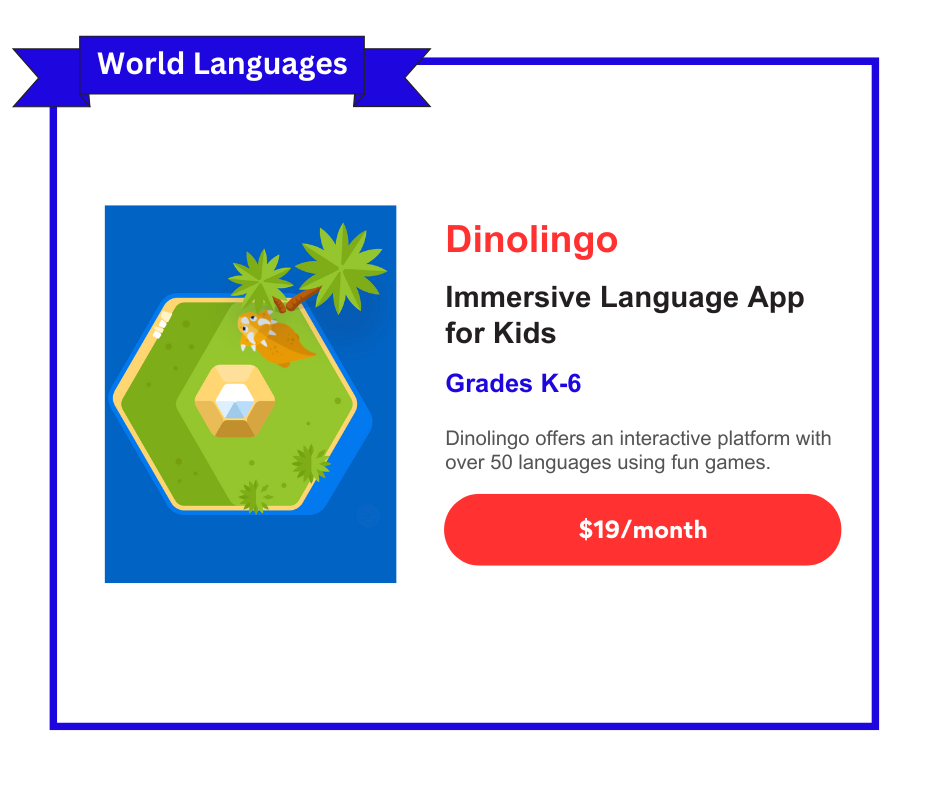
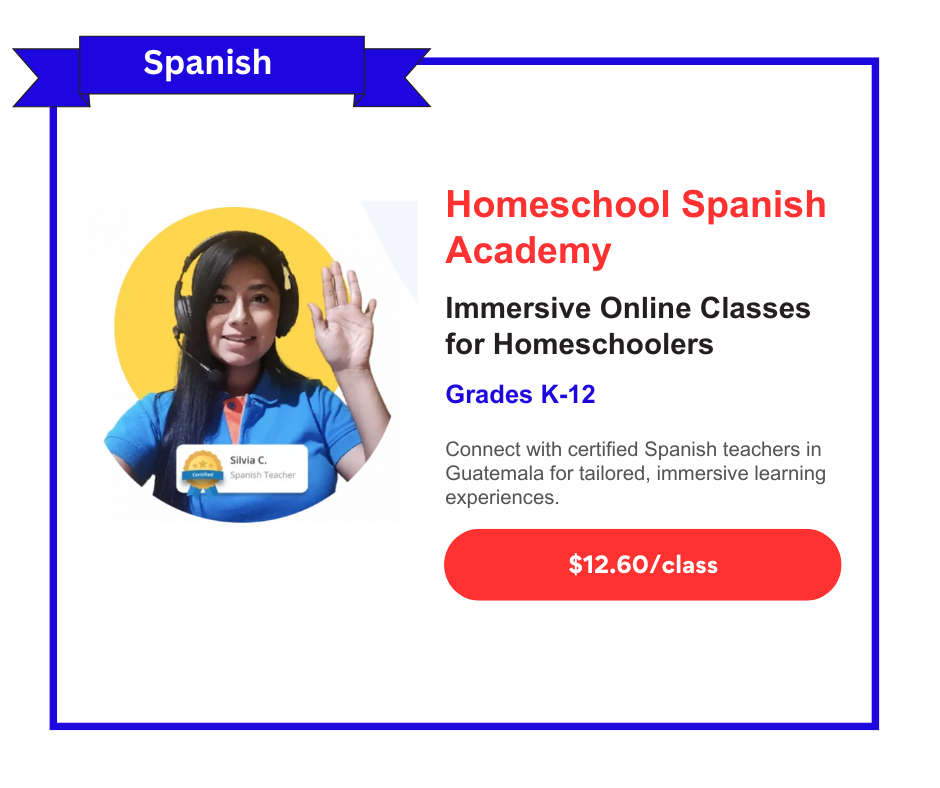
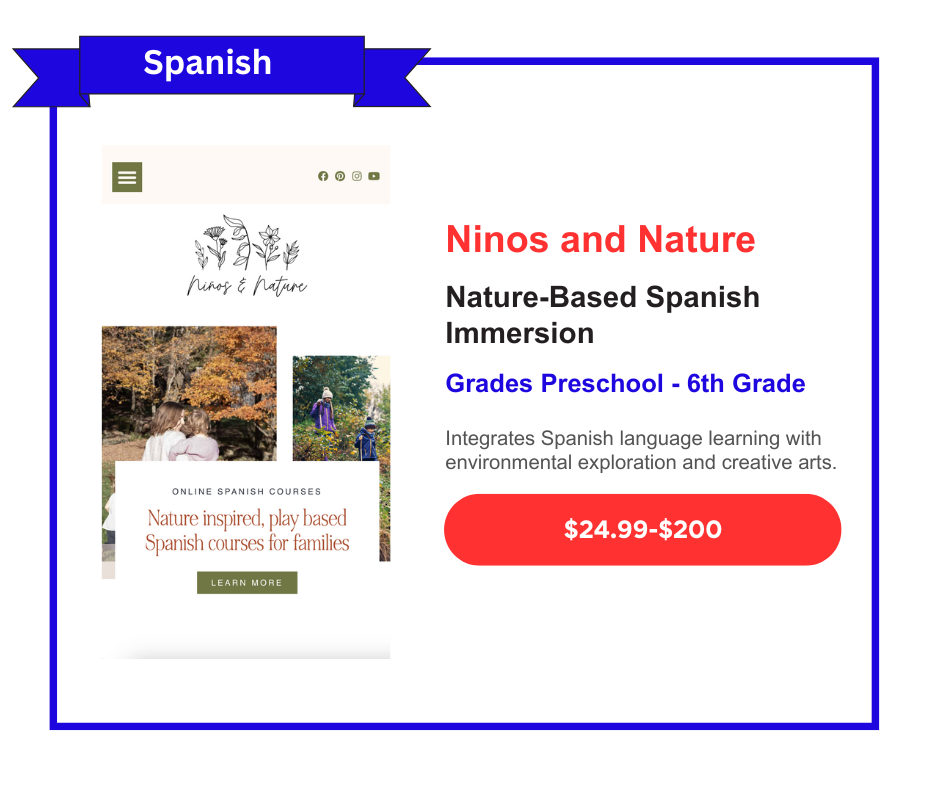
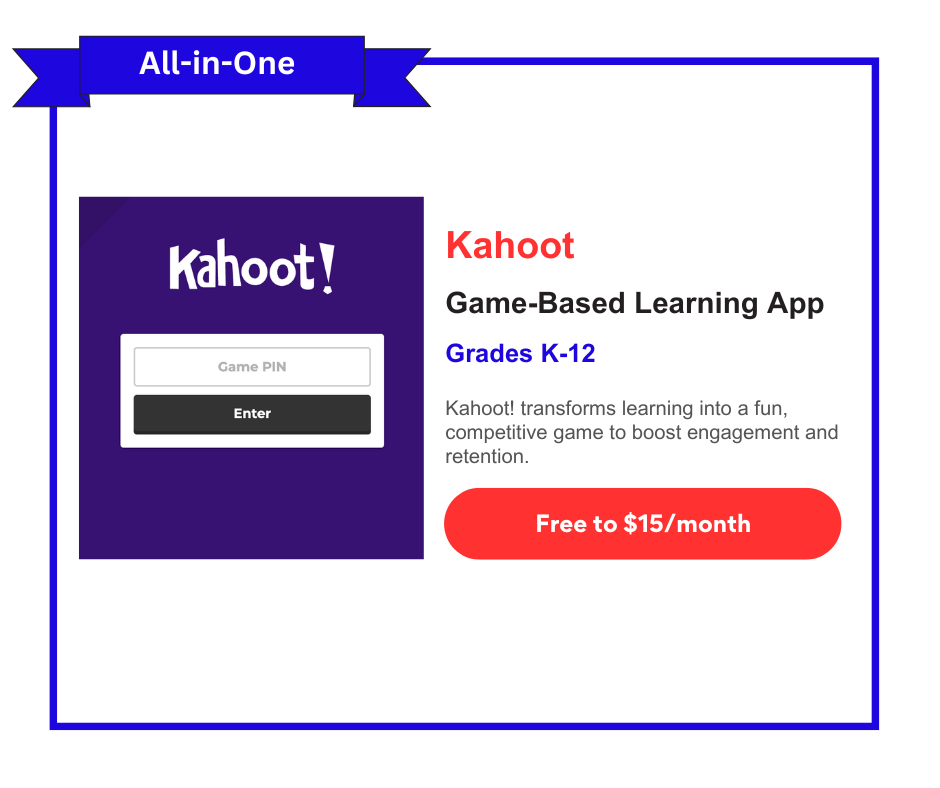
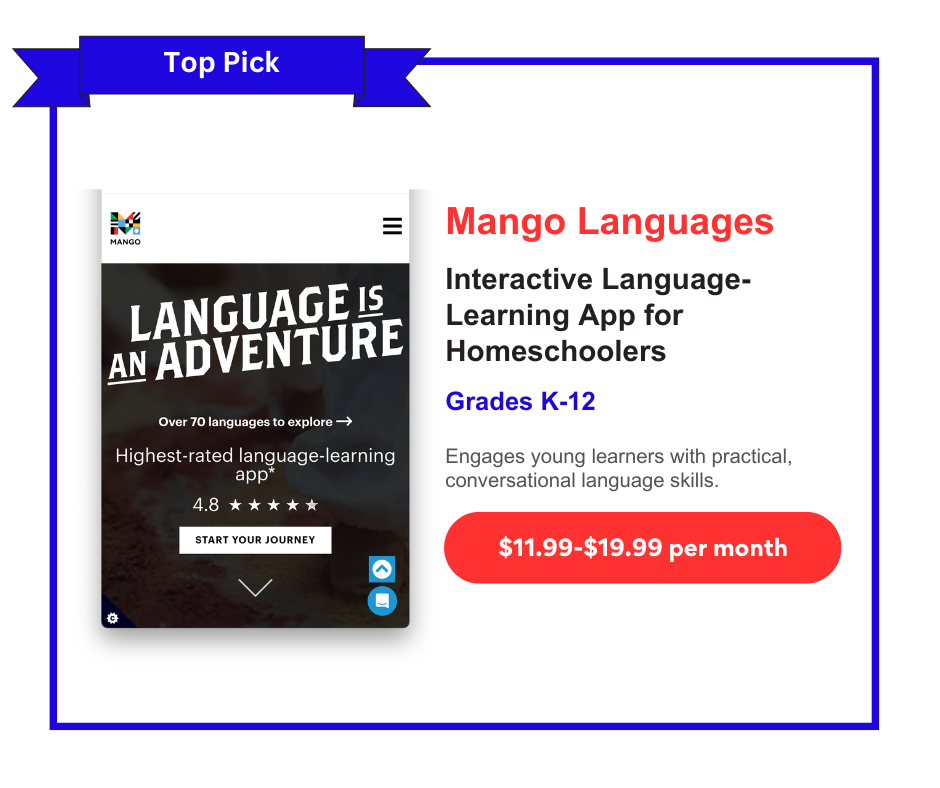
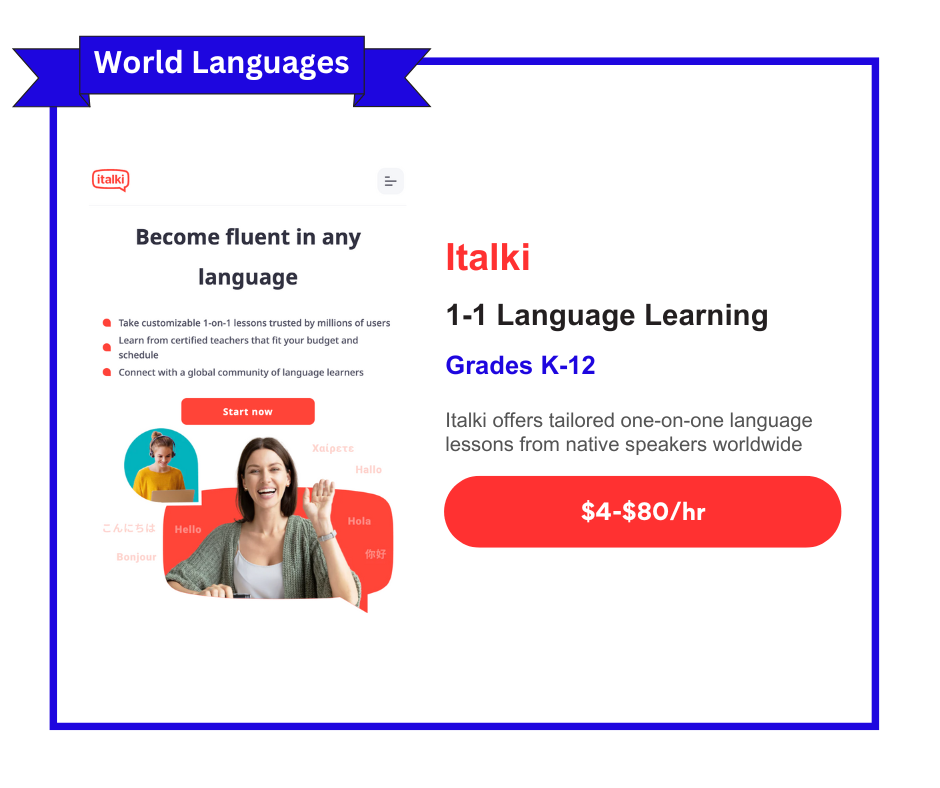


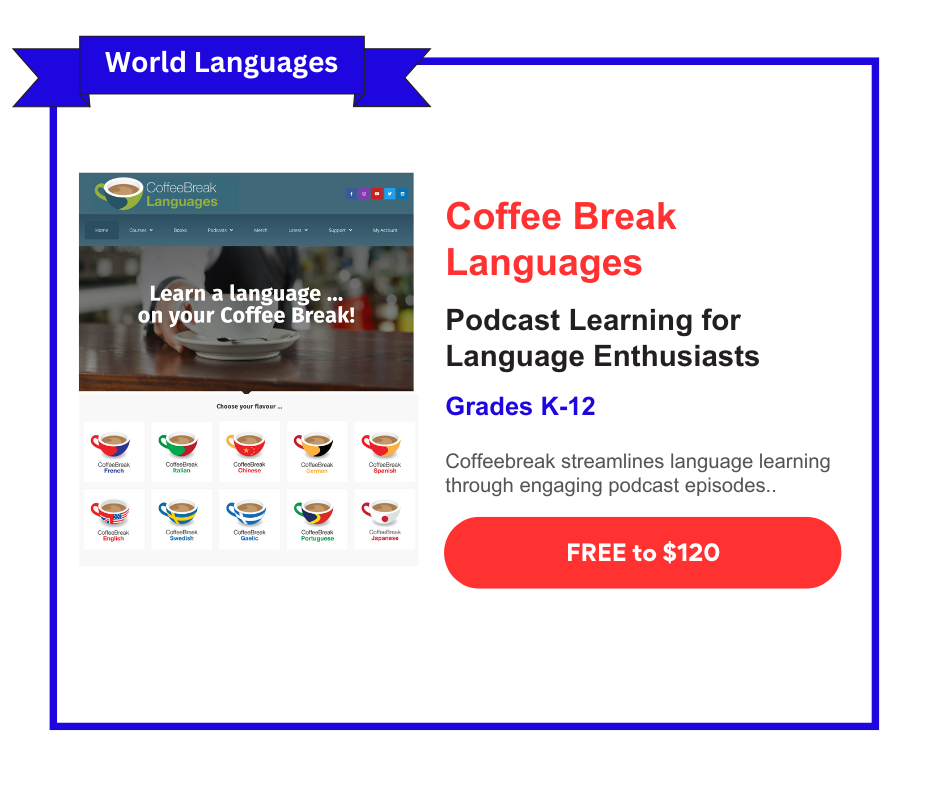
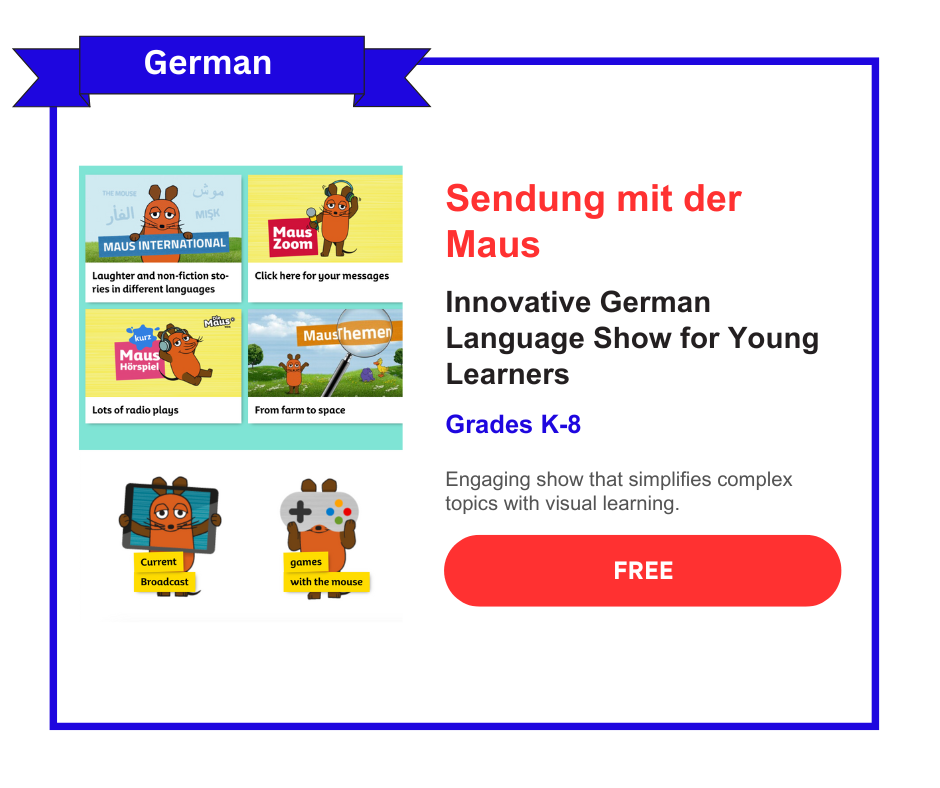


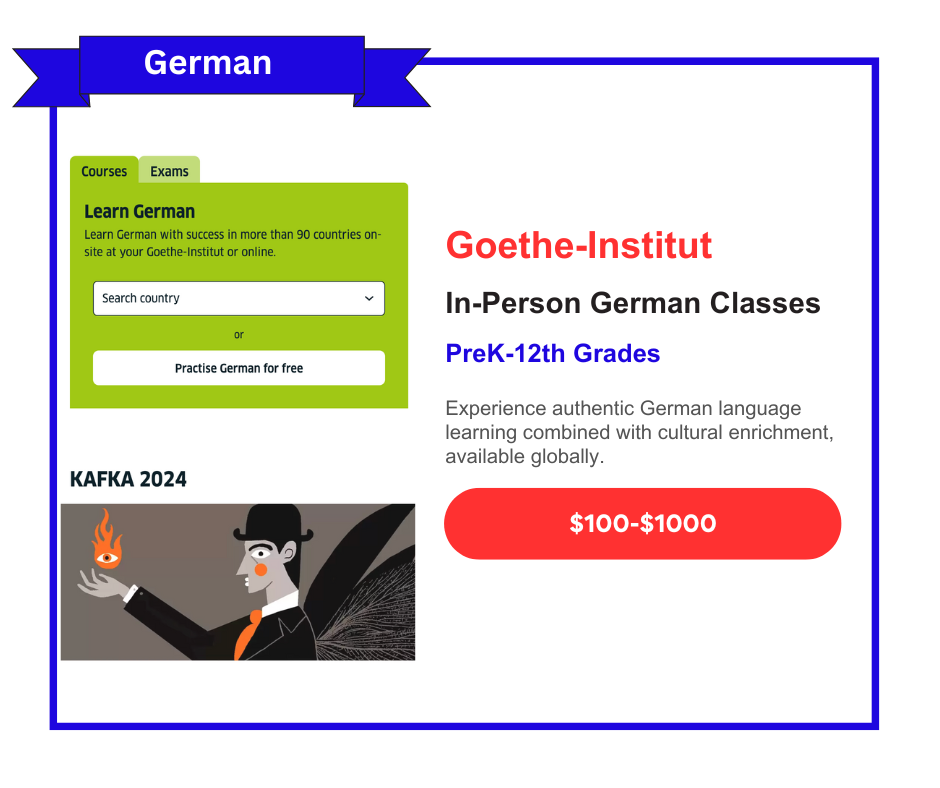

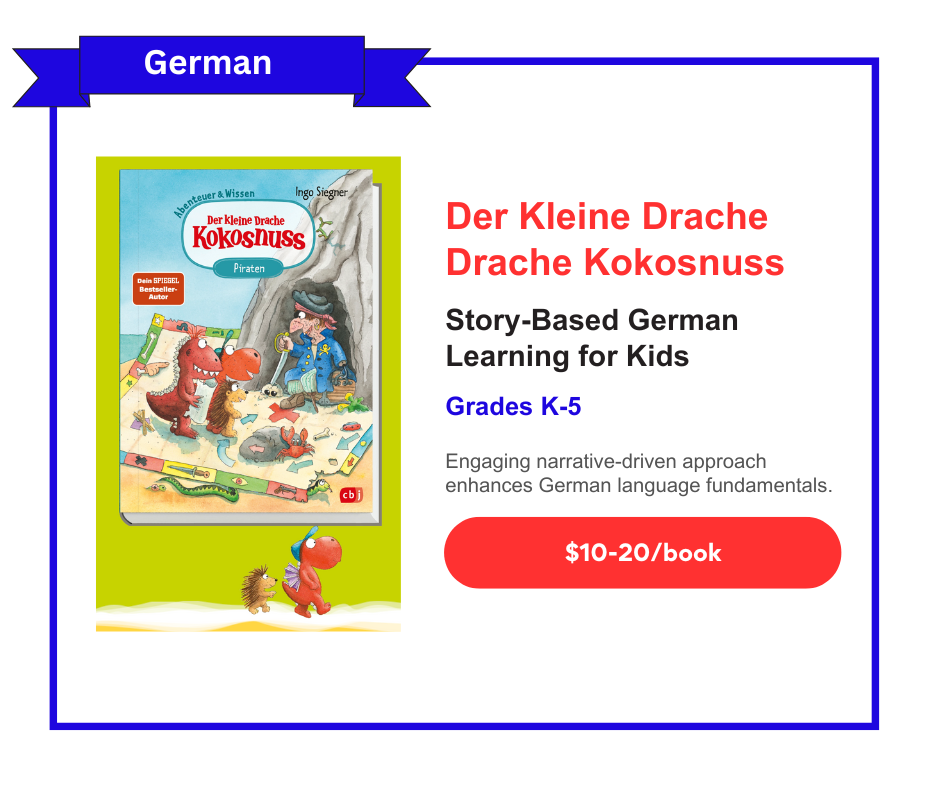
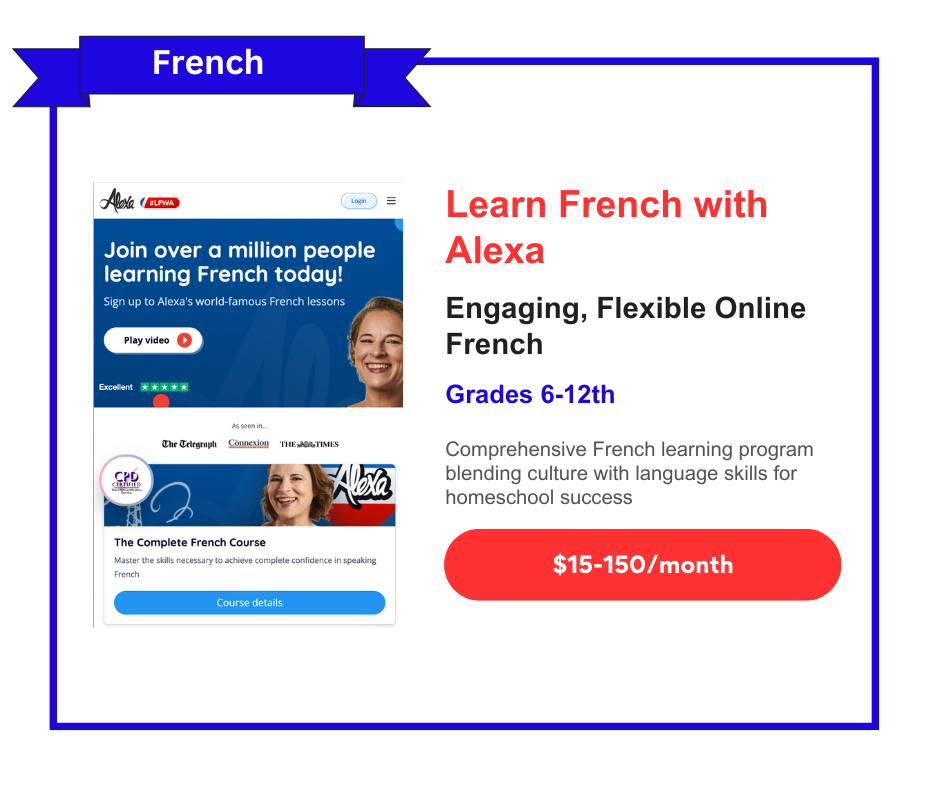
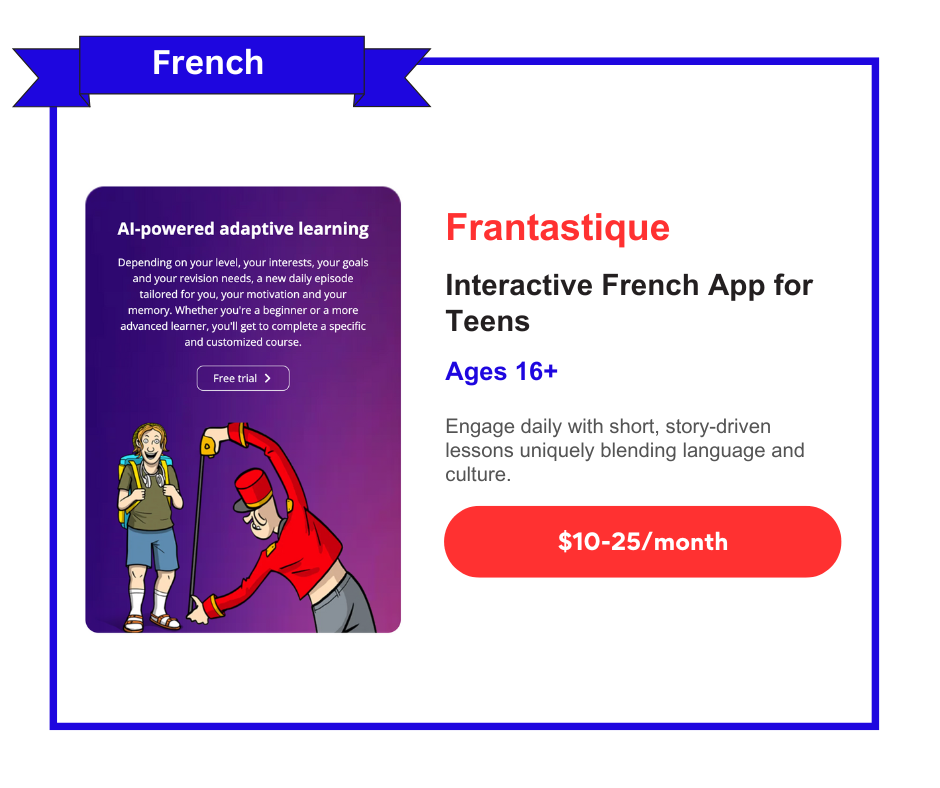
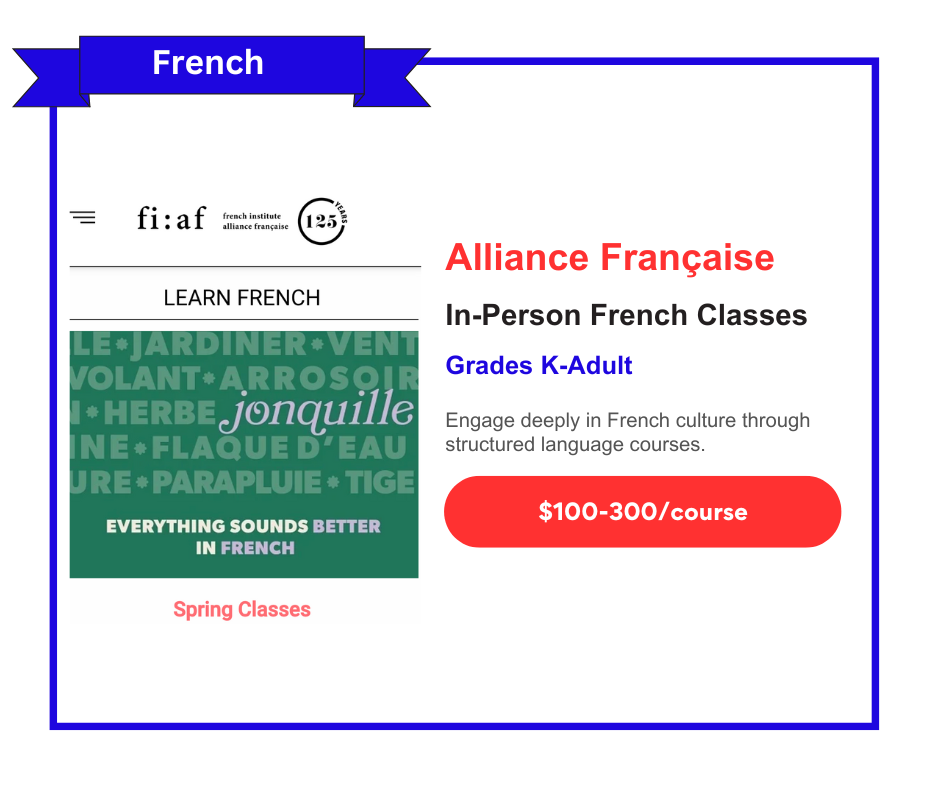
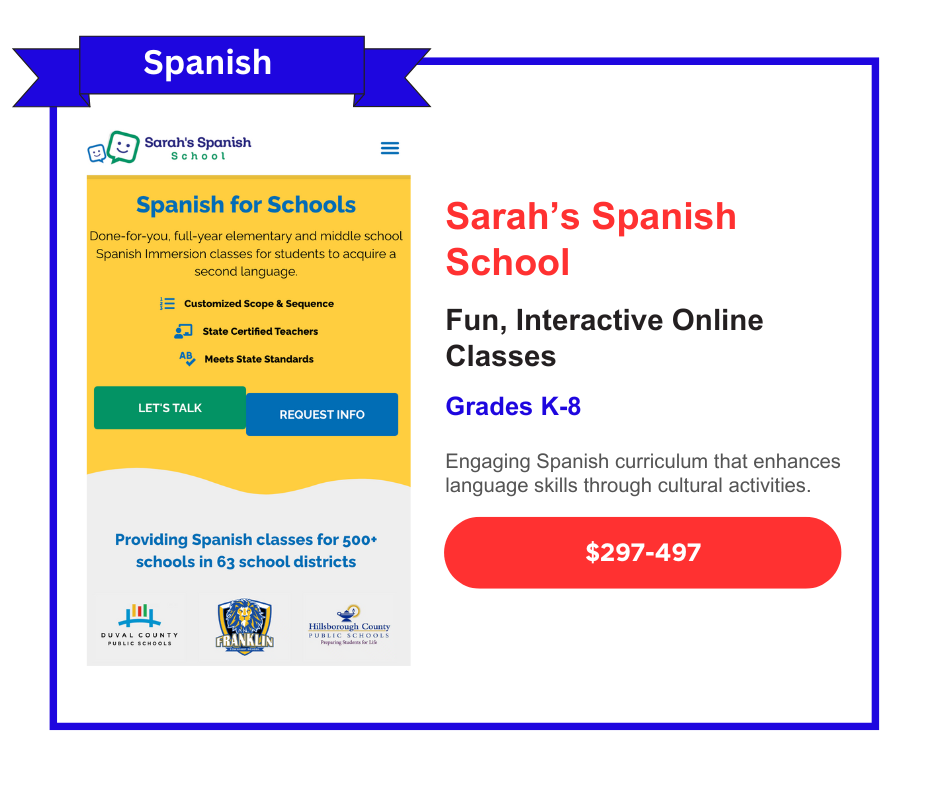
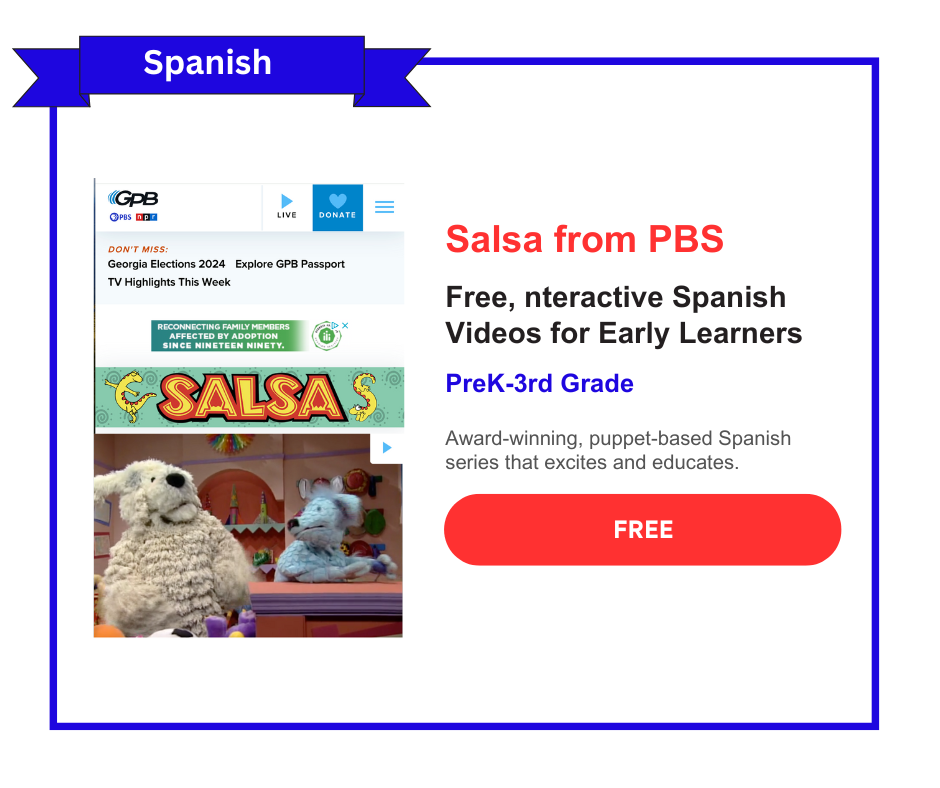
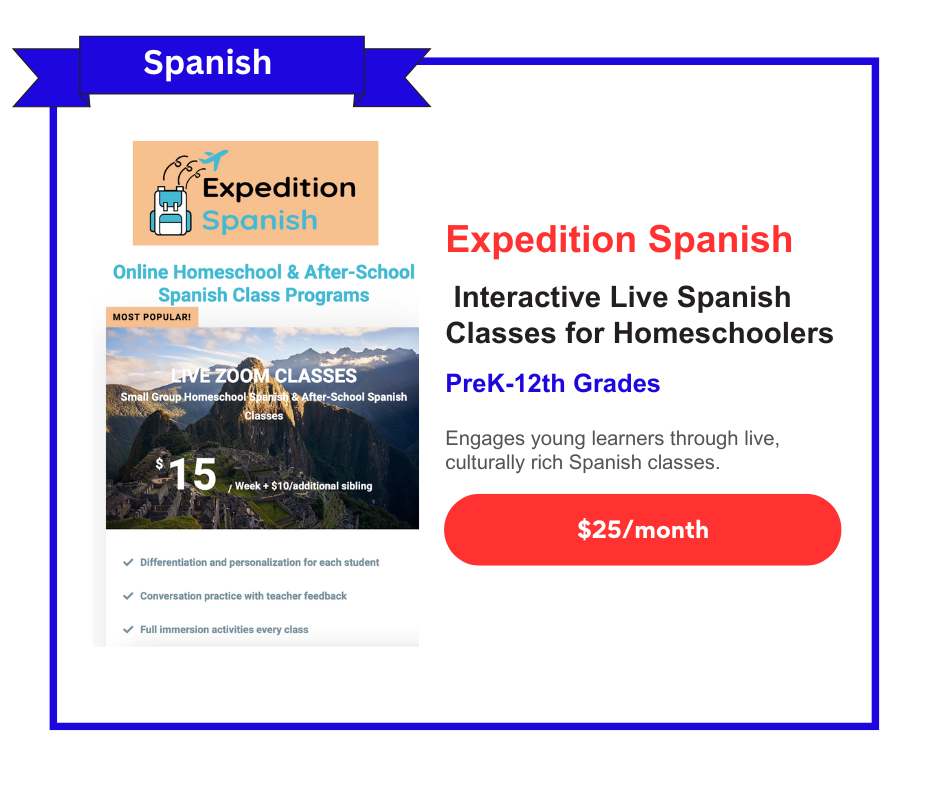
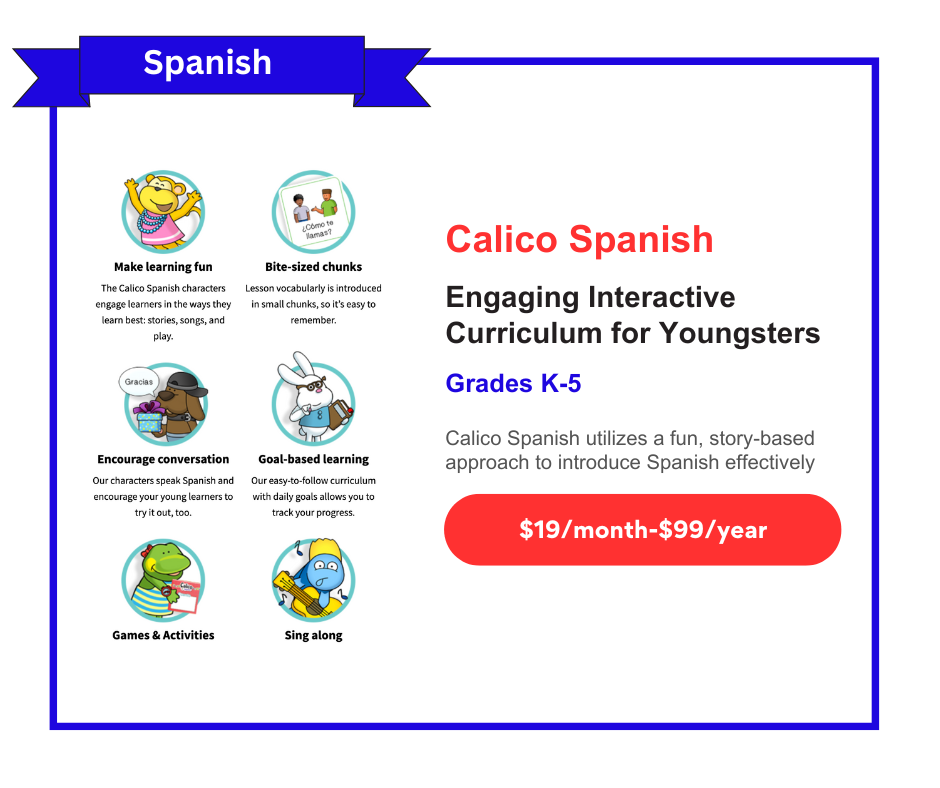

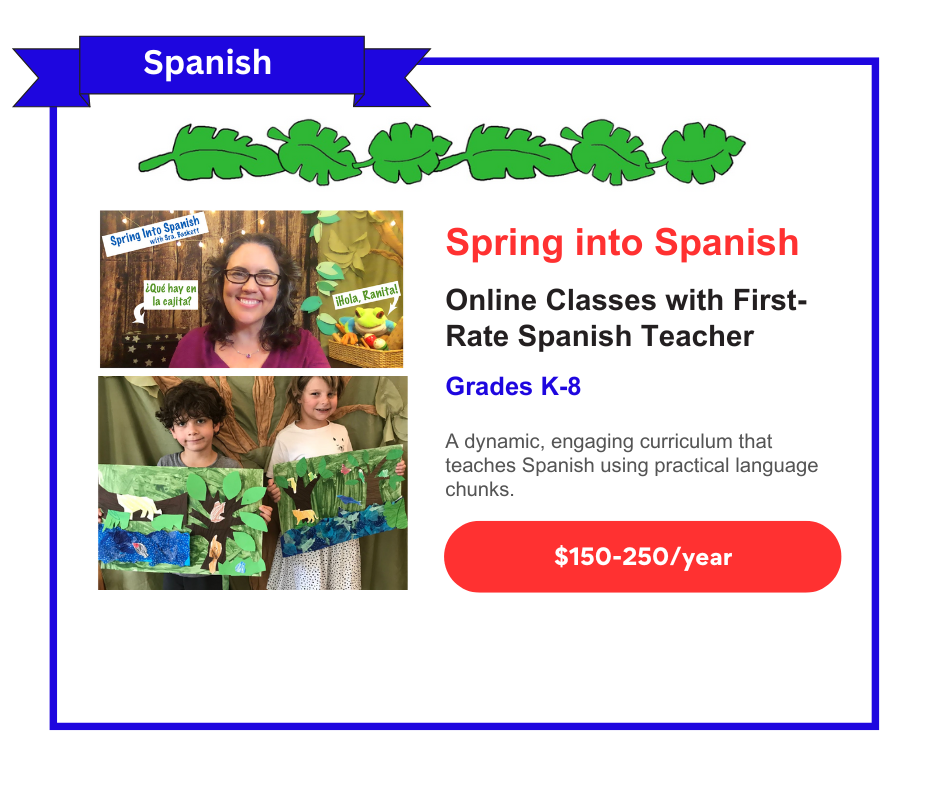

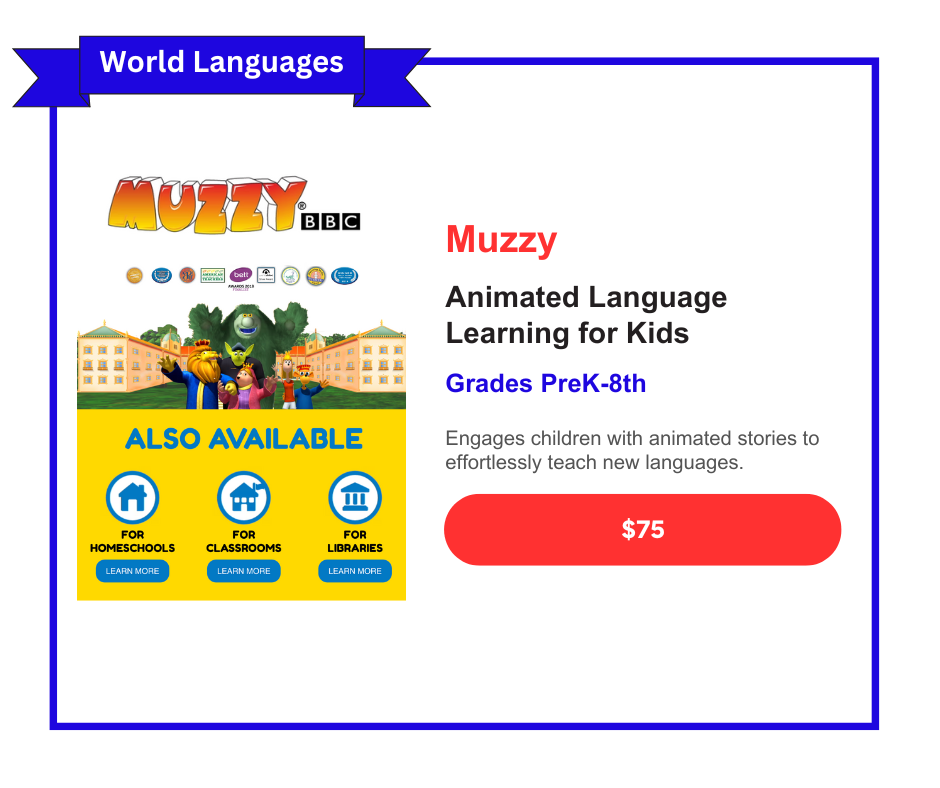


Explore how Duolingo transforms language learning into an engaging, gamified experience with our comprehensive review, ideal for homeschoolers seeking a flexible educational tool.